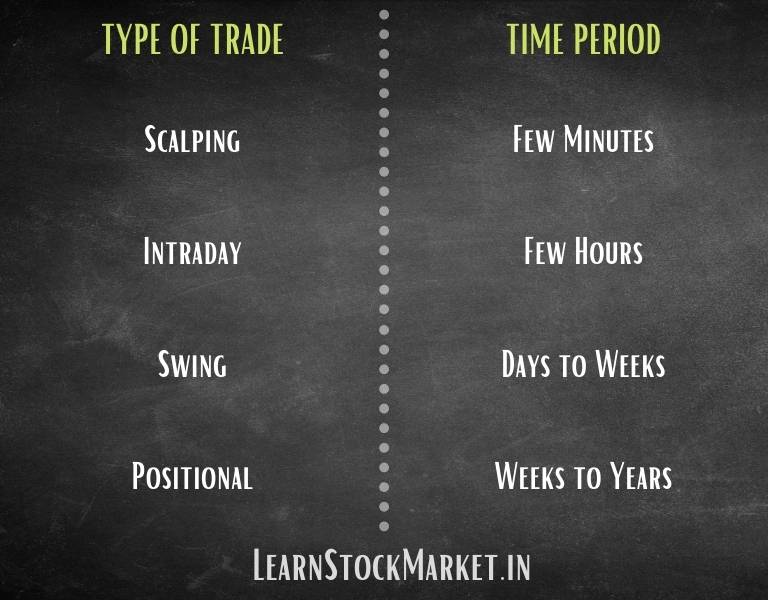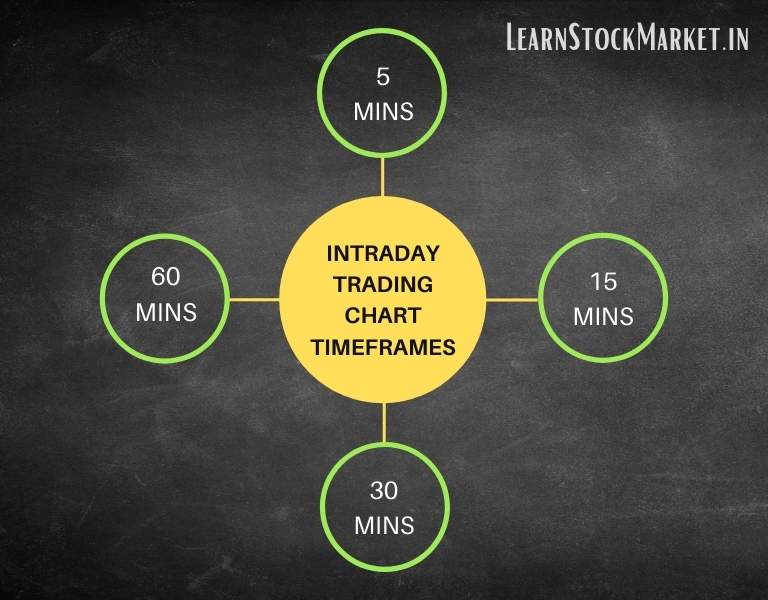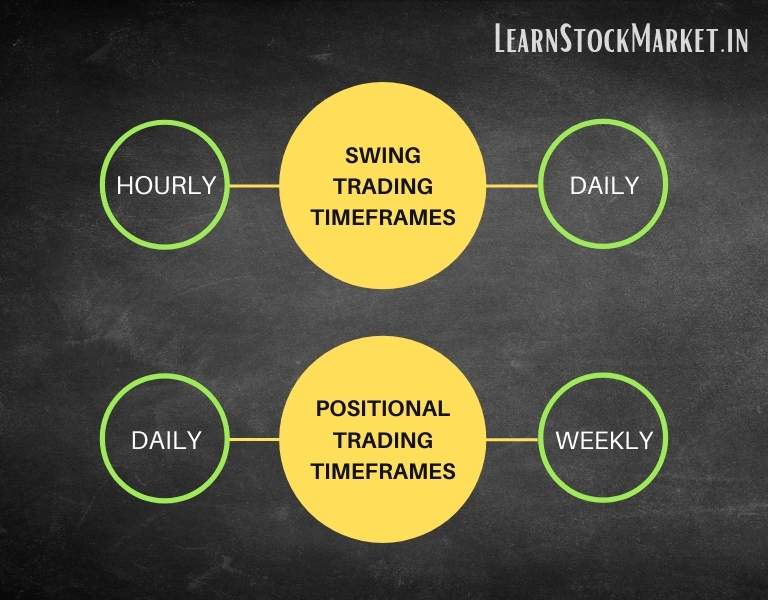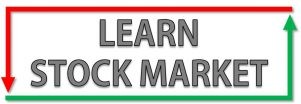Which is the Best Time Frame for Trading Intraday? This is easily the most common question, which I get asked.
A lot of people also want to know which time frame is the best for Swing and Positional Trading.
If you do not understand what Intraday, Swing or Positional is, let me explain.
- Intraday Trading: If you buy and sell on the same day, it is called Intraday trading or Day Trading.
- Swing Trading: If you buy and hold stocks for a few days to weeks, it is called Swing Trading.
- Positional Trading: If you buy and hold stocks for several months to years, it is called Positional Trading.
There is also something called ‘Scalping’, which is a trade taken for few seconds to few minutes only. ‘Scalpers’ look to make quick gains when they spot a profitable trade.
In short, ‘Scalping’ and ‘Intraday’ trading is opened and closed on the same day. Swing trading is for short to medium term. And positional trading is usually medium to long term.

Best Time Frame for Scalping
The most commonly used timeframe for ‘Scalp trading’ is between 1 to 5 minutes. You could use the 1-minute time frame on the chart, or 3 minutes or 5 minutes.
Some scalpers also use 15 minute timeframe, but very few go beyond that. It does not make sense to use 30 minute timeframe or higher because trades are taken for a very short duration of time.
Some scalpers follow the 5-minute time frame to take the trade and then switch to lower time frame to close the trade.
Best Time Frame for Intraday Trading

Intraday traders (also called day traders) use time frames between 5-minutes to 60-minutes. The more commonly used are 15-minute and 30-minute timeframes on the chart.
In India, the market is open between 9:15AM to 3:30PM. The goal of an intraday trader is to find a favorable setup, take the trade and exit on the same day.
An intraday trader should also make use of higher time frames like ‘Daily’ to understand the trend of the stock. For example, if ‘Reliance Industries’ is on an uptrend in a higher time frame like ‘Daily’ – an intraday trader should be careful before ‘going short’.
An intraday trader should also analyze the ‘breath’ of the broader market. In other words, if the market is on a strong uptrend like it was in the second half of the year 2020, ‘shorting’ should be avoided.
It always makes more sense to take trades which align with the broader market. If the market is bullish, why take the risk of shorting – when money can be made by buying?
Remember, it’s always difficult (and risky) to swim against the tide and easier to swim in the direction the tide is moving.
Also, knowing the important support and resistance levels on higher time frames like ‘Daily’, definitely helps.
Best Time Frame for Swing Trading
Swing trades are more relaxed in nature, compared to scalping or day trading. They do not carry the pressure of finding new trades every day, and decision making is slower.
The more commonly used time frames for swing trading are ‘Hourly’ or ‘Daily’ chart.
Since I do not like watching my screen throughout the day, I prefer ‘Swing’ and ‘Positional’. I do not generally take intraday trades.
If there is an opportunity for swing trades, I usually end up analyzing both the hourly as well as daily chart to understand the direction of the trend, along with the important support and resistance levels.
If you are beginner to the stock market, and wish to make trading you profession in the future – it’s always better to start as a swing or positional trader and gain experience.
Also, avoid small-caps and mid-caps for the first one or two years of trading. Stick to Nifty 50 stocks. Trade in small quantity. Gain experience. Understand your own self – do you like taking quick trades or are you more comfortable with holding your positions for longer periods of time?
Understand your own nature is important if you are to become a successful trader.
Best Time Frame for Trading Positional

Positional Trading is for long-term trades. Here the difference between a positional trader and a long-term investor gets a little blurry.
I like a combination of both, technical as well as fundamental. For positional trades, I like to look at the ‘Daily’ and ‘Weekly’. Sometimes even the ‘Monthly’ charts.
If I find a favorable setup, I go deeper into analyzing the business potential and fundamentals of a company.
Some of my ‘positional’ trades stretch from anywhere between a few months to several years. Without understanding the business, it is difficult to get the conviction to give large percentage allocation in the portfolio.
Once you understand the business, you will gain the confidence to invest more and hold it for a long period of time.
What type of trading do you prefer? Which timeframe do you generally use for trading? Do share your views in the comment section below.
How to change Chart Time Frame in Zerodha
If you do not know how to change the time frames. The video below will help you.
If you are using Zerodha, Time frames can be easily changed. You can watch the video below.
Do notice how the time periods change when you select different time frames. When weekly charts are selected, it shows nearly 2 years of data on one screen as each candle is one week.
Monthly charts can help you identify long term trends, as each candle had data of one month. 12 candles is one year. So on one screen you can see the trend from 2011!
Watch the video.


How can I use dual stochastic oscillator on intraday chart
thank you sir , its very very use full my trading life , also share this information my trading group friends
I mostly use 5min timeframe to take the trade and then switch to 2 min time frame to close the trade
add indicator two times and change the period as you want like 14,3,3 or 5,3,3